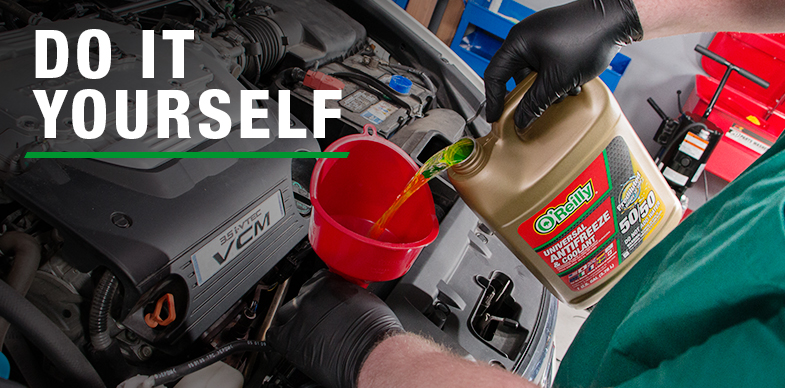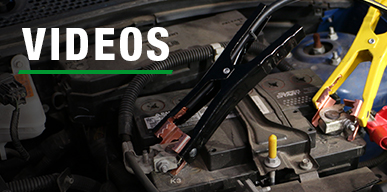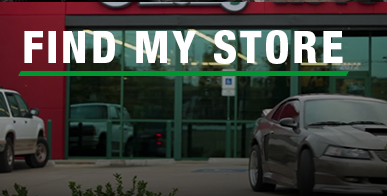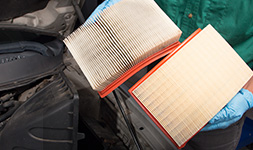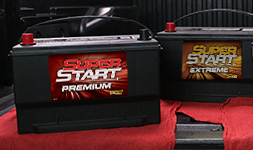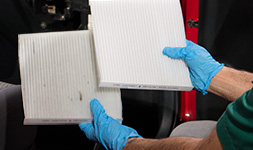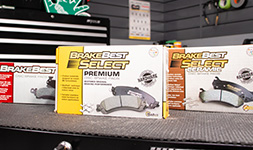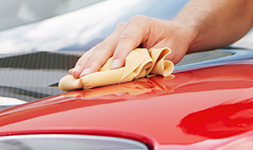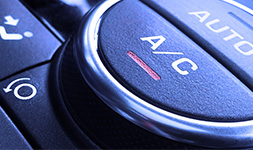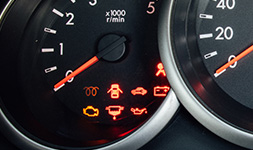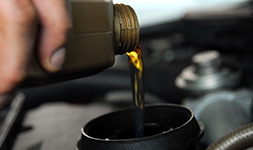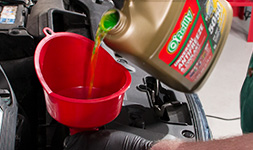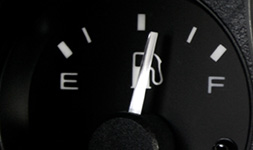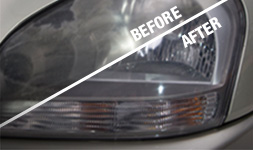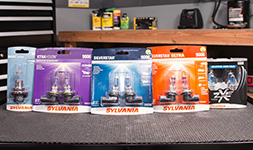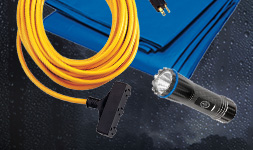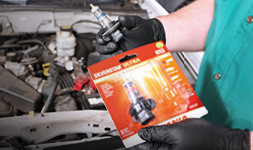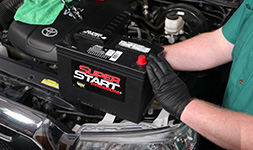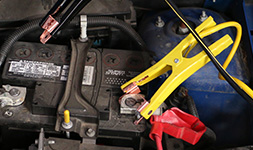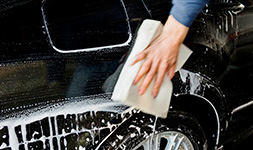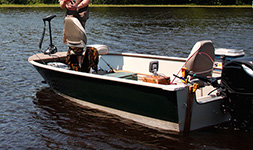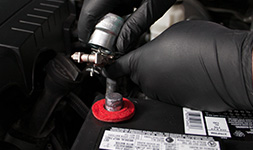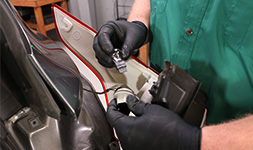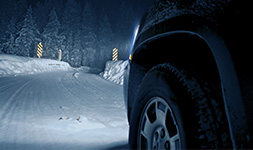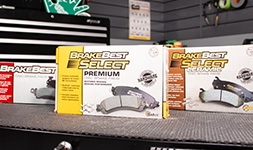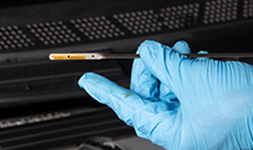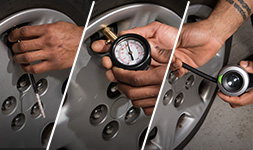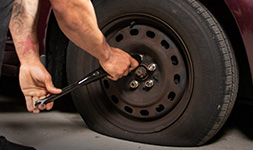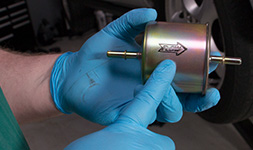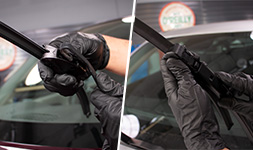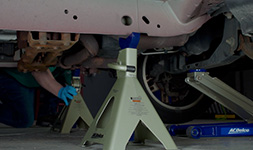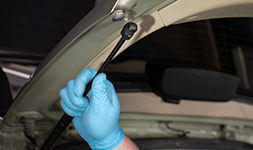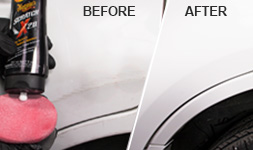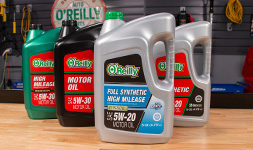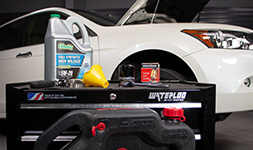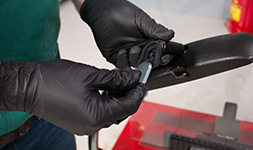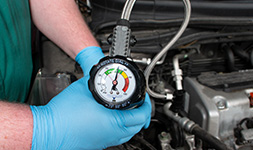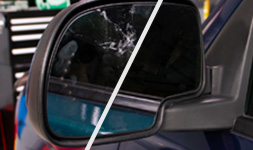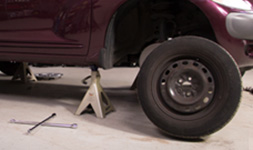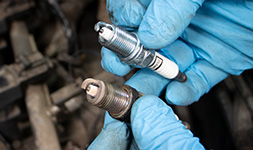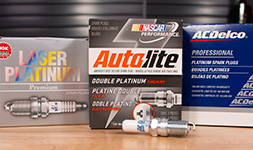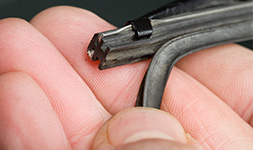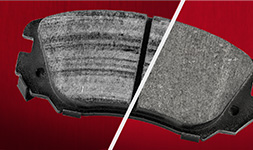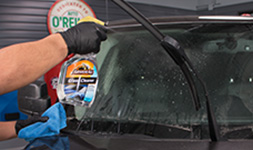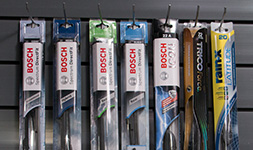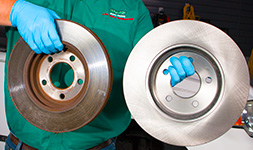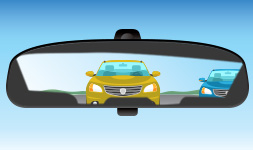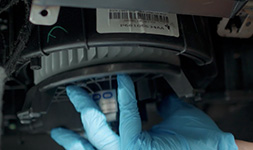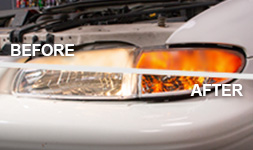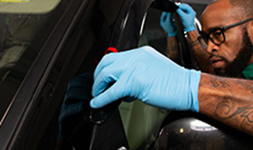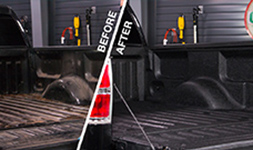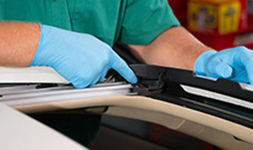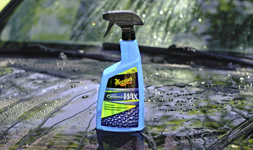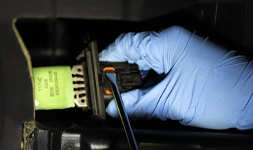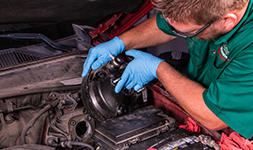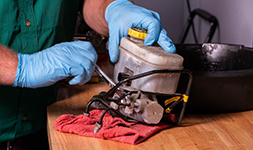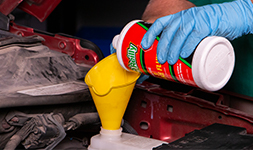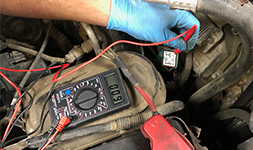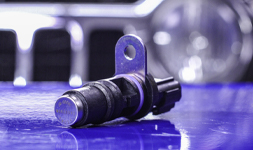Maintenance, Diagnostic, Advice, & How-To's
Show More
Show Less
Do It Yourself
Changing your air filter is one of the best ways to prevent contaminants from getting sucked into your car’s engine. Typically, you should change your air filter every 12,000 to 15,000 miles, but your vehicle will have specific recommendations in the service manual.
Your vehicle's battery is important in getting you where you want, when you want. Ensuring you've got the right battery for your car, truck, or SUV's needs is essential in keeping you on the road. Batteries differ in their spec and features, so let us help you decide which battery is right for you.
Nearly 80% of vehicles manufactured after 2000 have cabin air filters. Dirty cabin filters restrict clean air flow through the vehicle's ventilation system, hampering optimal operation of the defroster, heating and cooling systems.
Your braking system includes components that can cause varying issues when not functioning properly, but servicing the entire system can get your brakes working like new again.
Your vehicle is one of the biggest investments you make. Keeping things clean inside and out will help your vehicle last longer, look better and hold its value over time. Plus, when your car looks good, you look good.
If your vehicle is going to keep running strong, it’s essential to keep your cooling system healthy; it is the temperature regulator for the engine, keeping things cool in the summer and warm in the winter. A properly maintained cooling system will help your vehicle run at full efficiency.
With so many sensors and dashboard lights in modern vehicles, it’s important to know some basics. Here are some of the more common symbols which can alert you to potential problems before they become troublesome and costly, as well as related products and services offered by O’Reilly Auto Parts.
Fall is the perfect time to perform routine maintenance on your vehicle before temperatures drop. Tune up your engine with new spark plugs, top off your vehicle’s fluid levels and replace worn-out wiper blades and headlights. Get all the parts you need for your fall tune-up at O’Reilly Auto Parts.
Flushing and filling your antifreeze is typically recommended every five years, but your vehicle manufacturer will have a specific recommendation for your vehicle.
We could all use a little extra money in our pockets, and a few small adjustments can add up to big savings. Below are some tips to help you increase your fuel economy and save some cash.
A fairly common problem that arises with modern headlights is dull, cloudy headlight lenses. Not only does it look bad, but it’s also a safety hazard, hindering your ability to see down the road and keeping other drivers from seeing you as well.
Sylvania Automotive makes a few different headlights that will fit your vehicle. Here’s a look at the different models to help you determine which ones you might want when you need a replacement.
It pays to be prepared in the event of a hurricane. Your local O’Reilly Auto Parts store stocks hundreds of items you’ll find useful before, during and after the storm. From flashlights & batteries to gloves, tape, tarps, bungees and more. We also have the necessary items to weather an extended power outage such as generators, gas cans & extension cords, automotive batteries and power inverters.
Changing your headlight bulbs is an easy form of maintenance that you can perform on your vehicle. Before you begin (or if you have any questions about your specific vehicle), we always recommend taking a look at your service manual.
Installing a new battery in your vehicle is an easy form of maintenance that will only take a few minutes of your time, and a few tools.
Jumping a car battery is a skill that everyone can use. As long as you have a jump starter or someone with a good battery, you'll be able to get your vehicle back on the road in just a few minutes.
Now that winter is behind us, millions of drivers will take to the roads to enjoy the warmer weather. Spring is the perfect time of year to make sure your vehicle is ready for the upcoming travel season and higher temperatures.
As winter comes to a close, marine enthusiasts start thinking about getting their boats ready for spring. To ensure a boat is safe and running well, there are a number of items a boat owner should inspect and address before getting back on the water.
People tend to associate dead batteries with winter, but summer heat can be even more damaging to your battery than winter cold. To help lengthen your battery's life and keep you on the road this summer, check out these helpful tips.
Changing your tail light bulbs is an easy form of maintenance that you can perform for your vehicle.
Chances are, you have vehicles that get you around in cold weather and vehicles that hibernate for the winter. The best way to maintain them all is to make sure they’re properly winterized. Here are some things to consider when the temperatures start to drop.
BrakeBest offers a complete line of brake friction products that includes brake pads, ceramic brake pads, brake rotors and brake shoes. Made from the highest quality materials, BrakeBest sets the standard for automotive brake system maintenance and repair. With all these options available, we're sure we can help you find the right choice for you and your vehicle.
Checking automotive fluids on a regular basis is an easy way to help ensure the longevity and reliability of your vehicle. We'll cover how to check and fill your motor oil, coolant, power steering fluid, brake fluid, clutch fluid, transmission fluid and windshield wash fluid.
Proper tire inflation can affect everything from the longevity of your tires to your fuel economy, so It's an important thing to check your tire pressure on a monthly basis. With a low level of difficulty, checking your tire pressure doesn't have to be a chore.
Getting a flat tire can be a stressful situation. Fortunately, using the proper safety precautions and tools, changing a flat tire can be a simple job you can perform yourself. Watch as we show you how to safely and properly change a flat tire on your vehicle.
The fuel filter is positioned between a car’s fuel pump and the fuel injectors. It is designed to filter out rust, scale, dirt and impurities from the fuel. Replacing the fuel filter regularly protects the fuel pump and fuel injectors from contamination. Check your owner’s manual for the manufacturer’s recommend filter replacement intervals.
Windshield wiper blades are your first line of defense when the weather begins obstructing your vision through the windshield. Having good wiper blades, and replacing them when needed, will keep you safe on the road. Watch as we show you how to replace them.
Knowing how to safely lift and support your vehicle will allow you to perform many other DIY jobs, like changing your oil, brakes or rotating your tires.
You never appreciate how important your lift supports are until you’re putting groceries in the back hatch and the door comes down and hits you on top of the head. Let us help you avoid a headache.
Door dings, road rash, gravel, salt, sand and debris can all lead to unsightly paint blemishes. Left unrepaired, they can make your car appear old & worn and can decrease its value. Fortunately, with some elbow grease and a little touch-up paint you can improve your vehicle’s appearance in a few easy steps.
Selecting the right motor oil for your vehicle will prolong the life of your engine. You vehicle's manufacturer will have specific viscosity recommendations for your engine, but we can help you choose the best oil type for your vehicle.
Changing your oil and filter regularly will help keep your vehicle running right. Most manufacturers recommend changing your oil every 6 months or 5,000 miles.
Knowing what to do to sell your vehicle can be stressful. Being prepared can help make the process a lot easier for you. There are a few simple steps to help you get the most for your vehicle. Watch as we show you what you need to do to get your vehicle ready to sell.
Replacing your vehicle's rearview mirror can be a quick and simple DIY job. Paying close attention to the included directions in the brand of adhesive you choose will ensure that when you replace your vehicle's rearview mirror, you don't run into too much trouble.
If your vehicle is blowing hot air, one reason may be because you need to recharge your A/C system. We'll show you how to recharge your air conditioning using A/C Pro.
Your side view mirrors ensure you have visibility around your vehicle on the road. When they become cracked, chipped, or lose clarity, you're jeopardizing your safety and the safety of those around you. Replacing your side view mirror glass requires just a few simple steps for most application.
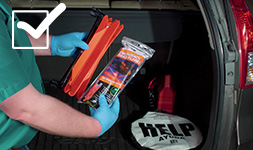
Road Trip Checklist
Whether you're planning a cross-country trip or a weekend getaway, taking the time for an auto check-up beforehand could help you avoid trouble down the road. Leave confident that your vacation won't be interrupted by car troubles. Our maintenance essentials will help you ensure everything's in working order so you and your car get there and back as planned.
Rotating your vehicle's tires can go a long way in maintaining the life of your tires. It's important to pay attention to a few factors when attempting to do it yourself. Watch as we show you how to rotate your vehicle's tires.
Spark plugs are an essential part of your engine. Most manufacturers recommend replacing your spark plugs every 30,000 miles but, depending on what type of plug you use, you may be able to change them every 60,000 to 80,000 miles.
There are two basic types of spark plugs on the market: your basic copper-tipped plugs, which can last up to 30,000 miles and long-life platinum and iridium-tipped plugs which have a life expectancy of up to 100,000 miles. Recommended replacement intervals vary by manufacturer and should always be followed.
Windshield wiper blades are your first line of defense when the weather turns ugly. Having good wiper blades, and replacing them when needed, will keep you safer on the road. There are two basic things to consider when it comes to wiper blades –how are they working, and what physical condition are they in?
Keeping your brake system healthy helps keep you and your family safe. There are several factors that determine how quickly brake pads wear out – the type of vehicle, type of use and the type of pads all make a difference.
Your on road visibility is only as clear as your windshield. If your windshield is covered in dirt and grime from the road, it will be harder to see what’s in front of you. Cleaning your windshield inside and out will help keep you safe on the road.
It’s recommended that you change your wiper blades every six months, or according to manufacturer’s recommendations for your vehicle. When it’s time to replace them, let us help you find the right wiper blades for you.
Pads and rotors wear out at various rates for various reasons. Pay close attention to the way your brakes feel before and after you change your pads and rotors so you can know for sure you’ve fixed the problem. We also have a video on how you can know it’s time to change your brakes, in case you're not sure what to look for.
While it may seem obvious, there is a proper way to adjust your side and rearview mirrors for optimal safety while driving. Watch as we show you how to properly adjust your mirrors.
Your blower motor is the fan that moves air into the cabin of your vehicle. Your heater, defroster and air conditioner all depend on the blower motor to function properly. When your vehicle is not pushing air through the vents, you may need to replace your blower motor.
Whether you have a sticker on your car's paint or glass, removing it from your car does not have to be difficult. Watch as we show you how to remove a sticker from your car.
Your headlight assemblies (or lenses) can wear over time or become damaged. If you’re dealing with oxidation, you may want to try restoring your headlights. If they’re too far gone, or if you’ve encountered a broken lens or lenses, below are instructions on how to replace your headlight assemblies.
Whether you want to add a touch of style to the exterior of your vehicles or have a way to crack your windows with fear of precipitation getting in, vent visors are an inexpensive way to improve your ride. Watch as we show you how you can install vent visors on your vehicle.
Not only do these coatings look great and protect against rust, but they also provide traction in the truck bed to prevent cargo from sliding around. Watch as we show you how to apply a roll-on truck bed liner.
Few things are worse than getting into a car with a wet interior after a storm, but you can make sure it never happens again with this simple procedure that works on any make or model. You can follow these simple steps to fix a clogged drain after leaks occur, or you can do it as part of preventative maintenance to prevent it from ever happening
Spray-on ceramic wax can help maintain your vehicle’s shine for much longer periods of time. There was a time when ceramic coatings had to be applied by a detail shop, and it could be extremely expensive. But spray-on ceramic wax is now more accessible to the do-it-yourselfer. Learn to apply it at home.
A blower motor resistor controls the fan speed of the blower, so if you have a blower that’s stuck on one speed or doesn’t work on certain settings, it could be the resistor.
If you’re noticing that it takes extra pressure on your brake pedal to slow down, you might be dealing with a failing booster.
The brake master cylinder is what forces hydraulic fluid out to your calipers and wheel cylinders. If you’re noticing a brake pedal that slowly goes all the way to the floor, you could be dealing with a failing master cylinder.
It’s possible for air to get into brake lines, and the result is spongy braking. Brake bleeding is necessary to remove the air from brake lines.
Each cylinder of a diesel engine has a single glow plug, and a harness supplies power to the entire bank of glow plugs. Diesel fuel under high pressure at high temperatures self-combusts, and in cold weather, glow plugs assist this process by heating the combustion chamber for cold starts.
Camshaft position sensors help adjust ignition and fuel injector timing for optimum fuel efficiency and power. When one or more cam sensors fail, it can cause the engine to run rough or even make it difficult to start the vehicle.
